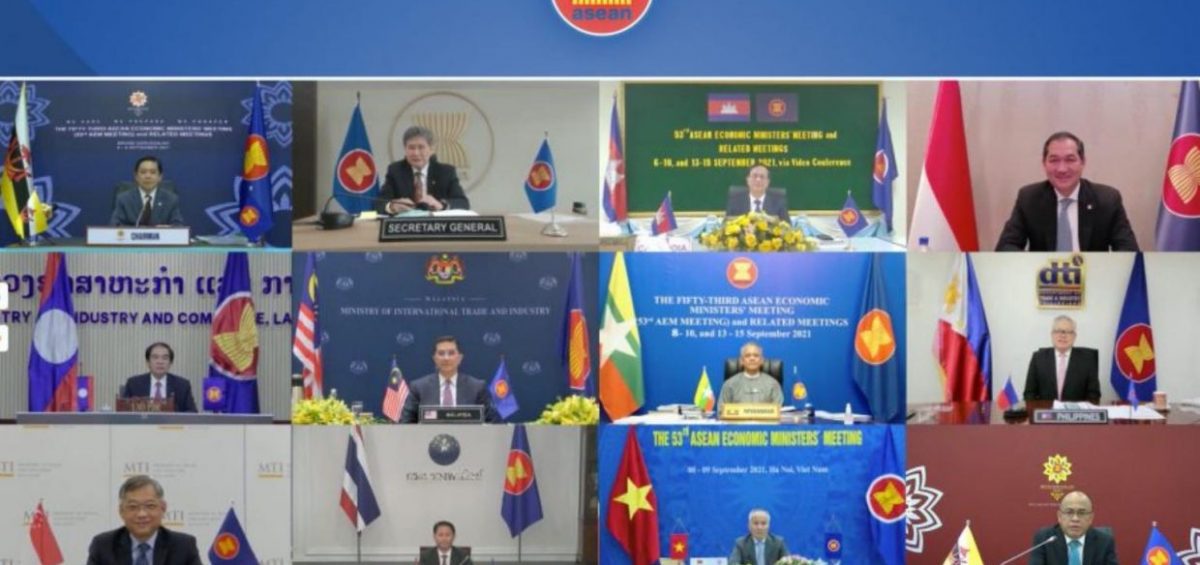As Asean continues to grapple with Covid-19 cases and an uncertain recovery, its economic ministers have committed to conducting a study on a region-wide digital economy pact by 2023.
They also agreed to start negotiations on the Asean Digital Economy Framework Agreement by 2025.
A focus on digital transformation to enable the smooth flow of goods and services and data will help ensure the region continues to draw global trade and investments, and better position itself for future growth, Singapore’s Minister for Trade and Industry Gan Kim Yong said at meetings with his counterparts last week.
“Asean remains fully committed to free and open trade and deepening regional economic integration, especially amidst the challenging backdrop posed by Covid-19,” he said.
“As the region emerges from the pandemic, it is important to leverage new growth opportunities in areas such as digitalisation and sustainability so that we entrench Asean as an attractive trade and investment proposition for our global partners.”
The 53rd Asean Economic Ministers’ Meeting was held via video conference on Sept 8 and 9, and will continue from Sept 13 to 15 when the ministers will meet their counterparts from the grouping’s key partners, including the United States and China.
At the meeting, chaired by Brunei, which holds the rotating leadership of the grouping this year, the Asean ministers endorsed the Bandar Seri Begawan Roadmap, which sets out an agenda to turn the ongoing pandemic crisis into an opportunity for South-east Asia through digital transformation and greater integration of its digital economy till 2025.
The road map highlights digital initiatives that are expected to boost the region’s competitiveness over the immediate and longer term.
These initiatives seek to build a foundation for an Asean digital economy that the ministers described as one “where the seamless and secure flow of goods, services and data is underpinned by enabling rules, regulations, infrastructure and talent”.
The Digital Economy Framework Agreement and timeframe are part of this road map.
A digital economy agreement establishes trade rules and facilitates interoperability between the digital systems of two or more economies.
It also supports cross-border flows of data, safeguards personal data and consumer rights, and encourages innovation and cooperation in areas such as artificial intelligence.
Singapore has so far negotiated two such agreements: the Digital Economy Partnership Agreement with Chile and New Zealand, and the Singapore-Australia Digital Economy Agreement, both of which were signed last year.
It has also started talks on digital economy agreements with South Korea and Britain.
At their meeting, the Asean ministers acknowledged that e-commerce and digital services are now providing alternative channels for people to continue activities such as working and learning.
To that end, the Workplan on Asean Agreement on E-Commerce, which identifies priority areas to ensure the continued development of electronic commerce in the region, was adopted.
The ministers also took note of the implementation of the Asean Comprehensive Recovery Framework – adopted by leaders at the Asean Summit last November – which serves as an exit plan from the pandemic through five broad strategies around health, human security, economic integration, digital transformation and sustainability.
The moves come at a time when economic recovery across the region remains “fragile” amid a resurgence in Covid-19 cases as new variants emerge and disrupt efforts to reopen borders, the ministers noted.
Nonetheless, the Asean ministers also said that the regional economy is picking up, with gross domestic product in South-east Asia expected to reach 4 per cent this year and 5.2 per cent next year.
In 2020, the Asean economy contracted by 3.3 per cent primarily due to mobility and cross-border travel restrictions.
As the region tries to sustain that recovery, vaccination remains the top priority and continued fiscal and monetary stimulus is necessary to reinforce the economy, the ministers added.
They also said: “Support for vulnerable groups, including informal workers, women and youth, is important to minimise the development gap that has been amplified by the pandemic.”




Leave a Comment